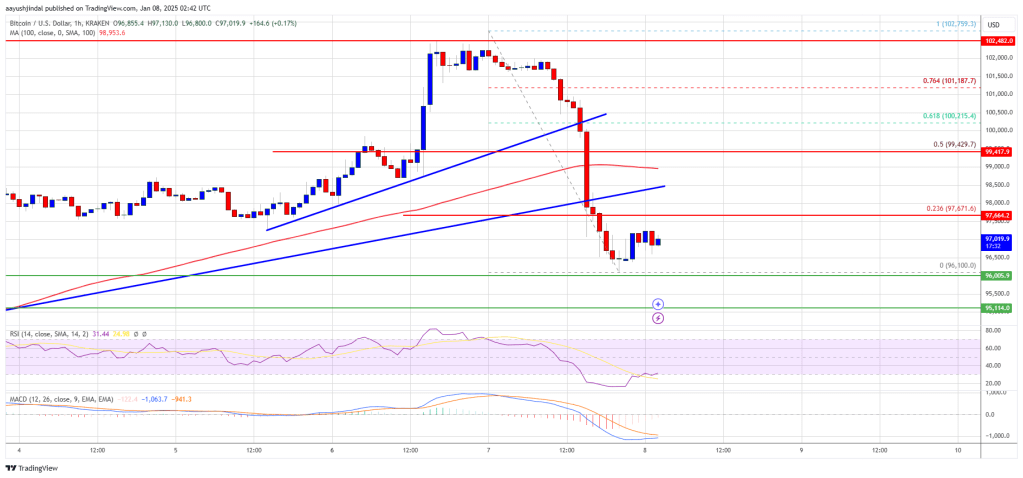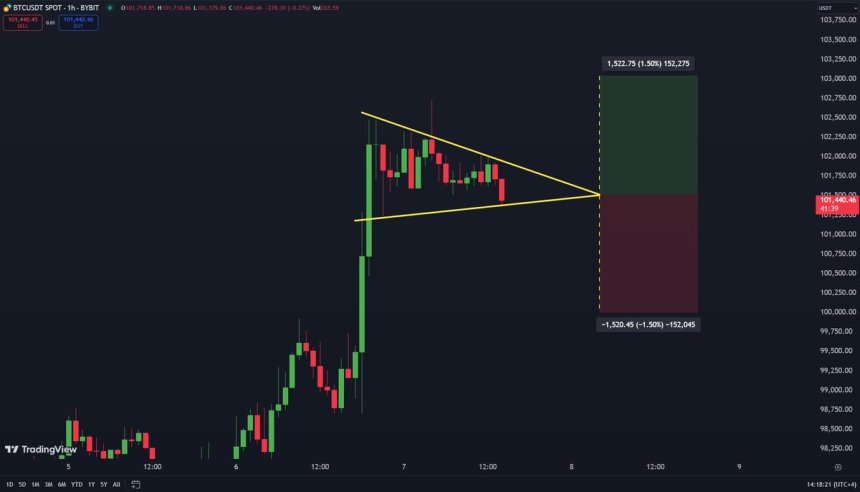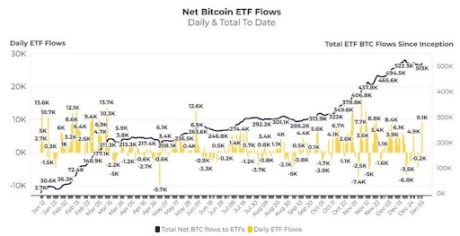Bitcoin (BTC) enthusiasts and investors have their eyes fixed on the potential launch of a spot Bitcoin exchange-traded fund (ETF), eagerly awaiting its impact on the cryptocurrency market. With predictions of substantial inflows, industry experts are delving into the potential ramifications of such a development, exploring its capacity to transform the landscape of digital assets.
Matt Hougan, the CEO of Bitwise, the world’s largest crypto index fund manager, shared his insights on the promising future of a spot BTC ETF, projecting a surge of around $50 billion within the first five years of its launch.
The concept of a Bitcoin exchange-traded fund centers around the idea of a fund that tracks the price of Bitcoin and can be traded on a stock exchange. This financial product allows investors to gain exposure to the price movements of Bitcoin without needing to directly own the cryptocurrency.
The introduction of a spot BTC ETF is anticipated to pave the way for an influx of institutional and retail investors, catalyzing a significant flow of capital into the crypto market. Hougan’s projections foresee an impressive $5 billion inflow in the initial year alone, setting a solid foundation for the anticipated five-year influx of $50 billion.
Considering the potential impact of a spot Bitcoin ETF, market analysts remain cautiously optimistic about its influence on the value of Bitcoin. While Hougan suggests an increase in demand for Bitcoin, the exact magnitude of this effect remains uncertain. The current market conditions, marked by a recent 1.1% dip in Bitcoin’s price following a week-long surge of 17.0%, underscore the sensitivity of the cryptocurrency market to external economic indicators.
Amidst the anticipation surrounding the potential launch of a spot BTC ETF, the looming release of the United States Core Price Consumption Expenditure (PCE) data by the US Bureau of Economic Analysis (BEA) poses a significant concern for the crypto market. This widely watched inflation measure is closely monitored by the Federal Reserve, with expectations of a rise in the upcoming report. If the PCE data aligns with projections, the ramifications for the crypto market could be notably bearish.
The potential for higher inflation to indicate a prolonged period of elevated interest rates could prompt a shift in investor sentiment, leading to a reduction in the allocation of funds towards riskier assets such as Bitcoin and other cryptocurrencies. The perceived stability and security offered by traditional assets like Gold might lure investors away from the volatility of the crypto market, adding a layer of complexity to the already intricate dynamics of digital asset investments.
(This site’s content should not be construed as investment advice. Investing involves risk. When you invest, your capital is subject to risk).
Featured image from iStock
Matt Hougan, the CEO of Bitwise, the world’s largest crypto index fund manager, shared his insights on the promising future of a spot BTC ETF, projecting a surge of around $50 billion within the first five years of its launch.
The Potential Impact Of A Spot Bitcoin ETF
The concept of a Bitcoin exchange-traded fund centers around the idea of a fund that tracks the price of Bitcoin and can be traded on a stock exchange. This financial product allows investors to gain exposure to the price movements of Bitcoin without needing to directly own the cryptocurrency.
The introduction of a spot BTC ETF is anticipated to pave the way for an influx of institutional and retail investors, catalyzing a significant flow of capital into the crypto market. Hougan’s projections foresee an impressive $5 billion inflow in the initial year alone, setting a solid foundation for the anticipated five-year influx of $50 billion.
Considering the potential impact of a spot Bitcoin ETF, market analysts remain cautiously optimistic about its influence on the value of Bitcoin. While Hougan suggests an increase in demand for Bitcoin, the exact magnitude of this effect remains uncertain. The current market conditions, marked by a recent 1.1% dip in Bitcoin’s price following a week-long surge of 17.0%, underscore the sensitivity of the cryptocurrency market to external economic indicators.
Inflation, Interest Rates, And The Crypto Market
Amidst the anticipation surrounding the potential launch of a spot BTC ETF, the looming release of the United States Core Price Consumption Expenditure (PCE) data by the US Bureau of Economic Analysis (BEA) poses a significant concern for the crypto market. This widely watched inflation measure is closely monitored by the Federal Reserve, with expectations of a rise in the upcoming report. If the PCE data aligns with projections, the ramifications for the crypto market could be notably bearish.
The potential for higher inflation to indicate a prolonged period of elevated interest rates could prompt a shift in investor sentiment, leading to a reduction in the allocation of funds towards riskier assets such as Bitcoin and other cryptocurrencies. The perceived stability and security offered by traditional assets like Gold might lure investors away from the volatility of the crypto market, adding a layer of complexity to the already intricate dynamics of digital asset investments.
(This site’s content should not be construed as investment advice. Investing involves risk. When you invest, your capital is subject to risk).
Featured image from iStock







